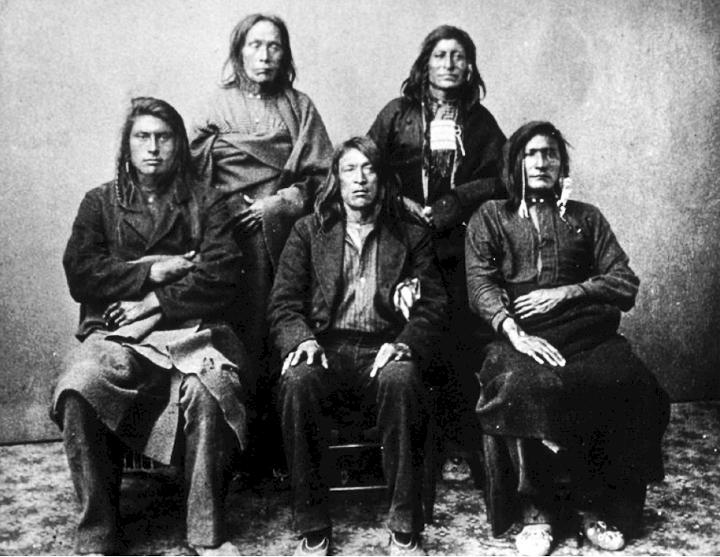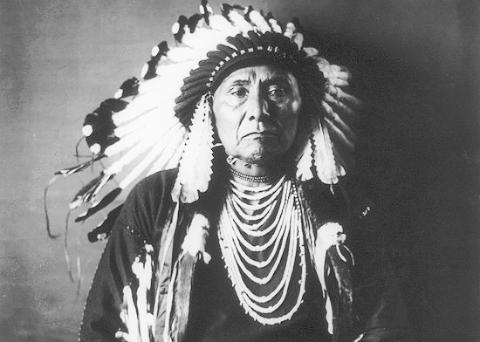 |
Canku Ota
|
 |
|
(Many Paths)
|
||
|
An Online Newsletter
Celebrating Native America
|
||
|
August 2018 - Volume 16
Number 8
|
||
|
|
||
|
How The Nez Perce
Were Kicked Off Their Land And Never Allowed To Return, Despite
Repeated Promises
|
||
|
by Meteor Blades - Daily
Kos Staff
|
||
On June 16, 1873, President Ulysses S. Grant issued an executive order barring white settlers from claiming title to northeast Oregon's Wallowa Valley. This was the traditional turf of one band of the Nez Perce (Nimi'ipuu) tribe. The executive order was needed because Nez Perce bands who didn't live in the valley had signed a treaty in 1863 surrendering it along with other lands. The U.S. government kept to the executive order until Grant left the presidency. Within two months of Rutherford B. Hayes's inauguration, however, the non-treaty Nez Perce had been ordered out of the Wallowa Valley and a five-month war and trek had begun, with 2,000 troops of the U.S. Army in pursuit. The Nez Perce was the largest tribe on the Columbia River Plateau when Lewis and Clark encountered it in 1805. The two Americans weren't the first white people the Nez Perce had seen. They got their name—"pierced nose," even though they didn't pierce their noses—from French fur traders. A half-century later, vastly reduced in numbers by war with white men and European diseases, they stood in the way of America's inexorable Manifest Destiny. In 1855, some Nez Perce bands agreed to a treaty with most of their traditional hunting grounds, including the Wallowa, set aside for them "permanently" in exchange for giving up some land and right of way. All the bands agreed, including the Wallowa band led by Tuekakas, known to the whites as Joseph after his Christian baptism in 1839, and later called Old Joseph to distinguish him from his son. However, in 1861, gold was discovered on Nez Perce land in Idaho, and 10,000 white settlers poured in. Conflict naturally arose. The government called for another treaty. This reduced the original land promised in 1855 by 90 percent.
Tuekakas opposed the deal because his band's beloved Wallowa Valley would have to be surrendered. Because he and the leaders of four other bands opposed the deal, the divisions were henceforth labeled treaty and nontreaty Nez Perce. Tuekakas staked out the valley with poles and declared "Inside this boundary all our people were born. It circles the graves of our fathers, and we will never give up these graves to any man." He died in 1871, and his son, Hinmuuttu-yalatlat (Thunder Rolling Down the Mountain), also known as Young Joseph, became leader of the Wallowa band. His father is reported to have said before his death:
For four years, the band stayed put, as President Grant had said they could. But relations with whites were tense. Settlers continued to move into the Wallowa and this led to inevitable clashes and a few killings on both sides. In May 1877, the one-armed Gen. Oliver O. Howard arrived. A big portion of U.S. Indian policy at the time was based on revenge for what had happened at the Little Big Horn the year before, and tribes like the Nez Perce were targeted even though none of its warriors had been with the Lakota, Cheyenne, and Arapahoe who had given George A. Custer his gory comeuppance. Without ceremony, discussion or advance notice, Howard told Chief Joseph that his band would be moved immediately. The first thought of many non-treaty Indians was to fight, but Joseph knew this was a losing proposition. So the band pulled up stakes, literally, from the Wallowa and crossed the Snake River, joining the other non-treaty bands and a small group of Palouse Indians. They were headed for the reservation, heartsick. Before they could get there, however, a small group of young warriors joined the band to say they had killed some whites and taken their horses. The 800 or so people in the allied bands soon learned the Army was coming after them.
Thus began one of the most famous conflicts of the Indian Wars. It captured the attention of the nation and Europe as newspapers told of the pursuit of the Nez Perce by Gen. Howard. The Crow, Custer's allies, refused asylum to the Nez Perce. So the decision was made to flee to Canada, where, they had learned, Sitting Bull had taken the Hunkpapa band of Lakota to evade the vengeful Army. The Wallowa Nez Perce and their allies went on a nearly 1,200-mile, three-month-long zig-zag trek, outmaneuvering the Army, white volunteers and Indian scouts, which included some of the non-treaty Nez Perce. Small clashes were won and lost throughout the summer. But attrition was catching up with the band. Its cohort of battle-ready warriors dwindled week after week. Ultimately, after a five-day battle in the freezing cold, with the remnants of the band starving and more than 150 warriors dead, Chief Joseph surrendered just 40 miles from Canada on Oct. 5, 1877. There, he was said to have given a stirring speech ending with "From where the sun now stands, I will fight no more forever." The bulk of scholars have long since believed that what Chief Joseph is reported to have said was actually a later invention by Howard's aide-de-camp, C.E.S. Wood. And yet those iconic 155 words written by a white man who later became a famous poet can be found everywhere listed as an, if not the, iconic American Indian speech. Here's Daniel Sharfstein writing at Slate last year on what happened after the capture of the surviving Nez Perce:
However, having a leader who was the "best Indian" didn't stir Congress or any president to give the tribe its land back. The Nez Perce repeatedly were promised they could return to the Wallowa. But it never happened. Chief Joseph died in 1904 at the Colville Reservation, living with the other 11 bands assigned there. And, despite there being numerous bridges, dams, streets, a mountain pass, a highway, a town, a creek, and a canyon named after their leader, today the Chief Joseph Band of Nez Perce still live at Colville. In the Wallowa Valley that the band never agreed to surrender, there is today the 160-acre Wallowa Band Nez Perce Trail Interpretive Center. The mission is to tell the story of the band's trek and "to assist in assembling the Wallowa Band Nez Perce culture and history in order to provide interpretation, knowledge and understanding to those who visit the grounds." Still there, near Lake Wallowa, lies the grave of Old Joseph. His valley is no longer surrounded by poles but, unlike his living kin, he remains forever in the land of his fathers. |
||||||
|
|
|
|
||
|
|
||
| Canku Ota is a free Newsletter celebrating Native America, its traditions and accomplishments . We do not provide subscriber or visitor names to anyone. Some articles presented in Canku Ota may contain copyright material. We have received appropriate permissions for republishing any articles. Material appearing here is distributed without profit or monetary gain to those who have expressed an interest. This is in accordance with Title 17 U.S.C. Section 107. | ||
|
Canku Ota is a copyright ©
2000 - 2018 of Vicki Williams Barry and Paul Barry.
|
||
 |
 |
|
|
The "Canku
Ota - A Newsletter Celebrating Native America" web site and
its design is the
|
||
|
Copyright ©
1999 - 2018 of Paul C. Barry.
|
||
|
All Rights Reserved.
|
||


